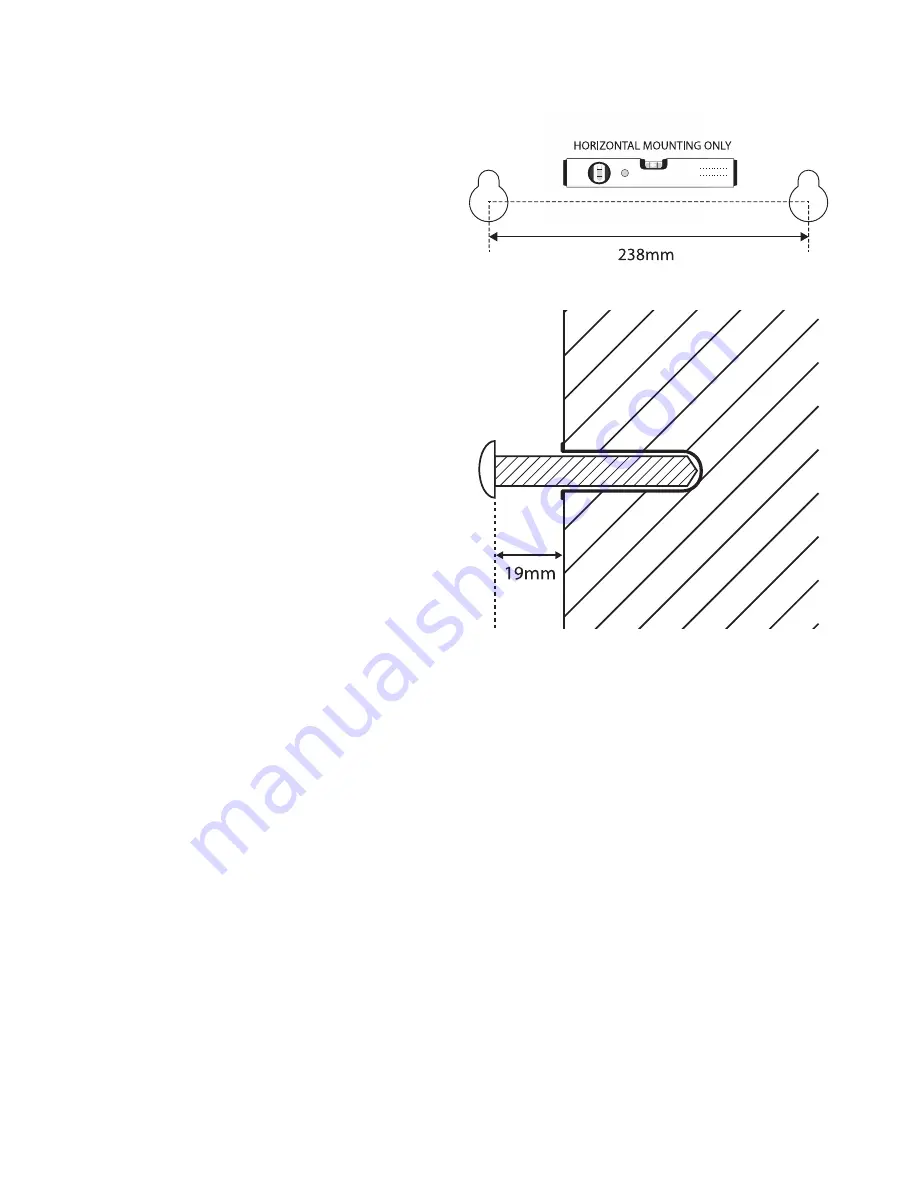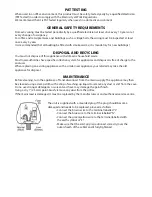
WALL MOUNTING (OPTIONAL)
The fan should be wall mounted by a competent
person.
The fan must be situated close to a mains socket,
on a flat stable section of wall and clear of any loose
objects or curtains that may become drawn into
the grille. The unit comes supplied with screws and
plugs designed for use with a solid masonry wall,
if the fan is to be mounted on any other surface
then appropriate fixings should be purchased or
a qualified person should be employed to ensure
correct fixing.
• Draw a level straight line on the wall and mark with
2 points 238mm apart (see fig. 1), the fan should
only be mounted with the bracket horizontal and
not at an angle.
• Drill the 2 holes using an appropriate drill for the
plugs and screws that are to be used to mount the
fan. Insert and tighten the screws leaving a gap of
19mm to the wall (see fig. 2).
• Sit the fan on the screws and lower onto the key
slots. Tighten the 2 screw to securely fasten the fan
to the wall.
• Adjust the fan as necessary.
The screws should be routinely inspected to
ensure that they are tight and the fan has not
worked loose during use.
Fig. 1
Fig. 2
OPERATING COSTS
At time of going to press, the average cost of electricity is £0.15 per unit (kilowatt-hour). The amount you
are being charged will be shown on your electricity bill. At this cost, the EH1676/EH1678/EH1680 will cost
9.3p/11.5p/12.6p per day to run on the “low speed” setting, or 12.9p/17.2p/18.7p per day to run on the
“high speed” setting.
PAT TESTING
When used in an office environment, this product must be safety-tested yearly by a qualified electrician
(PAT Tested) in order to comply with the Electricity at Work Regulations.
We recommend that it is PAT tested regularly when used in a domestic environment.
GENERAL SAFETY REQUIREMENTS
Domestic wiring must be tested periodically by a qualified electrician at least once every 10 years or at
every change of occupancy.
For office and retail premises, and buildings such as village halls, the wiring must be inspected at least
once every 5 years.
It is recommended that all building be fitted with smoke alarms (it is mandatory for new buildings).























